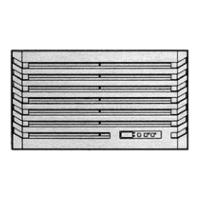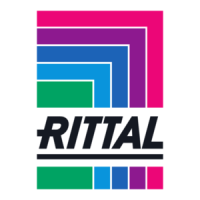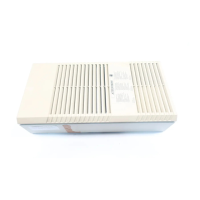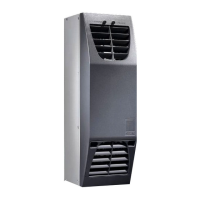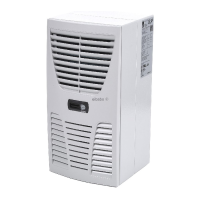Do you have a question about the Rittal SK 3296500 and is the answer not in the manual?
Lists essential accessories required for reinforcing the enclosure roof plate mounting surface.
Details automatic operation and temperature setting for cooling units controlled by a thermostat.
Explains setting desired temperature and the importance of the switching difference.
Covers microcontroller operation, parameter programming, and system test procedures.
Explains fault indication and signal relay functionality.
Details the potential-free fault signal relay and its connection.
Describes the system for monitoring filter mat soiling and its impact.
Details the function and connection of an optional door limit switch for unit control.
Explains the optional PLC interface for transmitting temperature and system messages to a PLC.
Describes transmission and interpretation of parallel fault codes for system messages and temperature data.
Explains the thermodynamic cycle, detailing the roles of compressor, evaporator, and condenser.
Highlights safety features like high-pressure monitoring and thermal winding protection for unit components.
Details connecting a discharge hose and installing a backflow preventer for condensate drainage.
Covers general aspects of cooling units including storage, transport, and waste disposal requirements.
Details customer connections for PLC interface, mains, and fault signal terminals.
Lists essential accessories required for reinforcing the enclosure roof plate mounting surface.
Details automatic operation and temperature setting for cooling units controlled by a thermostat.
Explains setting desired temperature and the importance of the switching difference.
Covers microcontroller operation, parameter programming, and system test procedures.
Explains fault indication and signal relay functionality.
Details the potential-free fault signal relay and its connection.
Describes the system for monitoring filter mat soiling and its impact.
Details the function and connection of an optional door limit switch for unit control.
Explains the optional PLC interface for transmitting temperature and system messages to a PLC.
Describes transmission and interpretation of parallel fault codes for system messages and temperature data.
Explains the thermodynamic cycle, detailing the roles of compressor, evaporator, and condenser.
Highlights safety features like high-pressure monitoring and thermal winding protection for unit components.
Details connecting a discharge hose and installing a backflow preventer for condensate drainage.
Covers general aspects of cooling units including storage, transport, and waste disposal requirements.
Details customer connections for PLC interface, mains, and fault signal terminals.
| Rated operating voltage | 230 V |
|---|---|
| Rated operating current at 50/60Hz | 2.4 A |
| Power consumption L35 L35 50/60Hz | 0.53 kW |
| Power consumption L35 L50 50/60Hz | 0.53 kW |
| Width | 280 mm |
| Height | 585 mm |
| Depth | 140 mm |
| Power input | 0.53 kW |
| Voltage | 230 V |
| Frequency | 50/60 Hz |
| Current | 2.4 A |
| Dimensions (H x W x D) | 585 mm x 280 mm x 140 mm |
